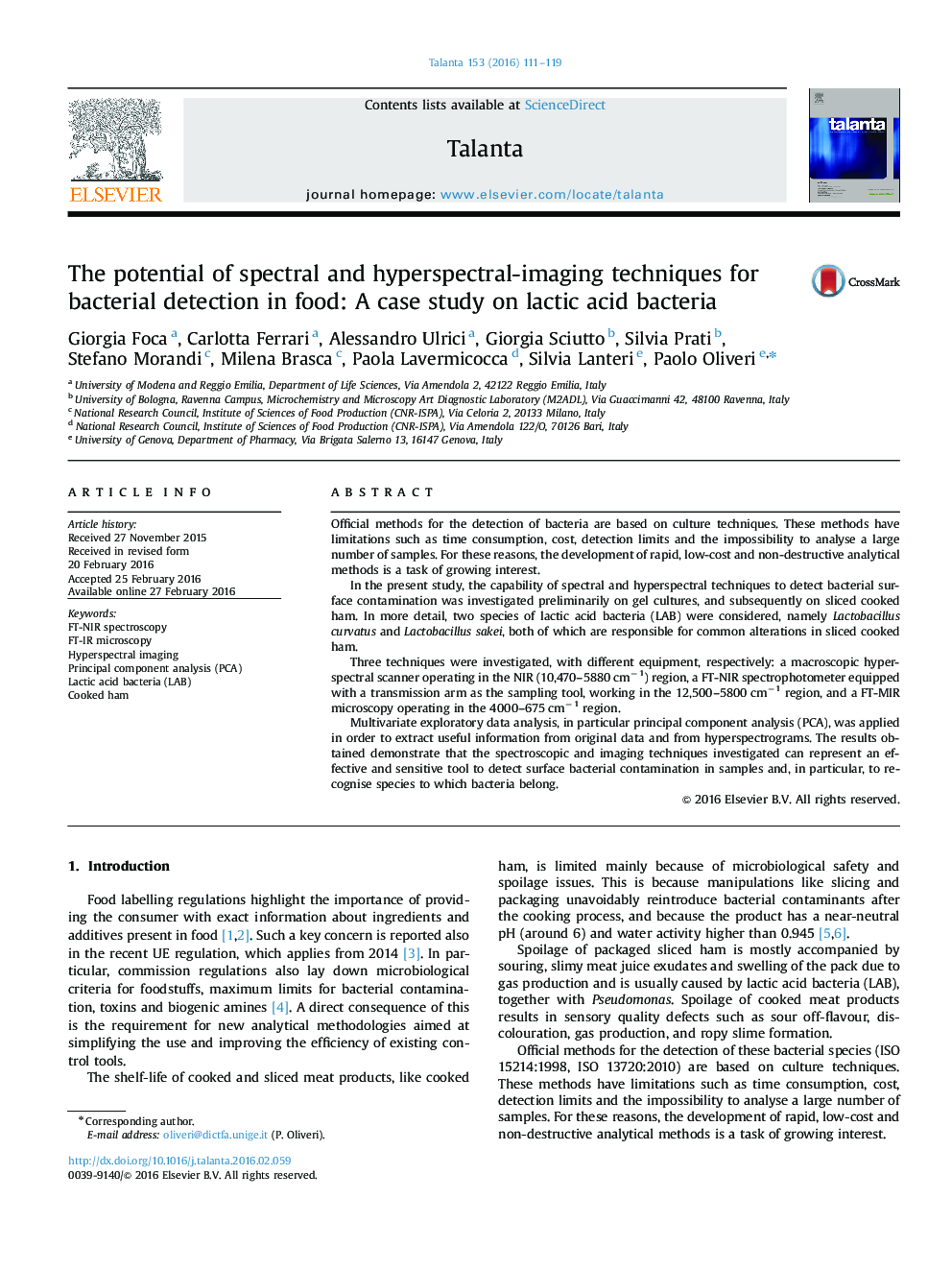| Article ID | Journal | Published Year | Pages | File Type |
|---|---|---|---|---|
| 1242564 | Talanta | 2016 | 9 Pages |
•Official methods for detecting bacteria are culture-dependent.•Limitations of these methods are high time consumption, costs and detection limits.•Capability of sensitive spectral and hyperspectral techniques was investigated.•The potential of near and the infra-red spectral regions were explored.•Multivariate exploratory data analysis was applied to extract useful information.
Official methods for the detection of bacteria are based on culture techniques. These methods have limitations such as time consumption, cost, detection limits and the impossibility to analyse a large number of samples. For these reasons, the development of rapid, low-cost and non-destructive analytical methods is a task of growing interest.In the present study, the capability of spectral and hyperspectral techniques to detect bacterial surface contamination was investigated preliminarily on gel cultures, and subsequently on sliced cooked ham. In more detail, two species of lactic acid bacteria (LAB) were considered, namely Lactobacillus curvatus and Lactobacillus sakei, both of which are responsible for common alterations in sliced cooked ham.Three techniques were investigated, with different equipment, respectively: a macroscopic hyperspectral scanner operating in the NIR (10,470–5880 cm−1) region, a FT-NIR spectrophotometer equipped with a transmission arm as the sampling tool, working in the 12,500–5800 cm−1 region, and a FT-MIR microscopy operating in the 4000–675 cm−1 region.Multivariate exploratory data analysis, in particular principal component analysis (PCA), was applied in order to extract useful information from original data and from hyperspectrograms. The results obtained demonstrate that the spectroscopic and imaging techniques investigated can represent an effective and sensitive tool to detect surface bacterial contamination in samples and, in particular, to recognise species to which bacteria belong.
Graphical abstractFigure optionsDownload full-size imageDownload as PowerPoint slide
